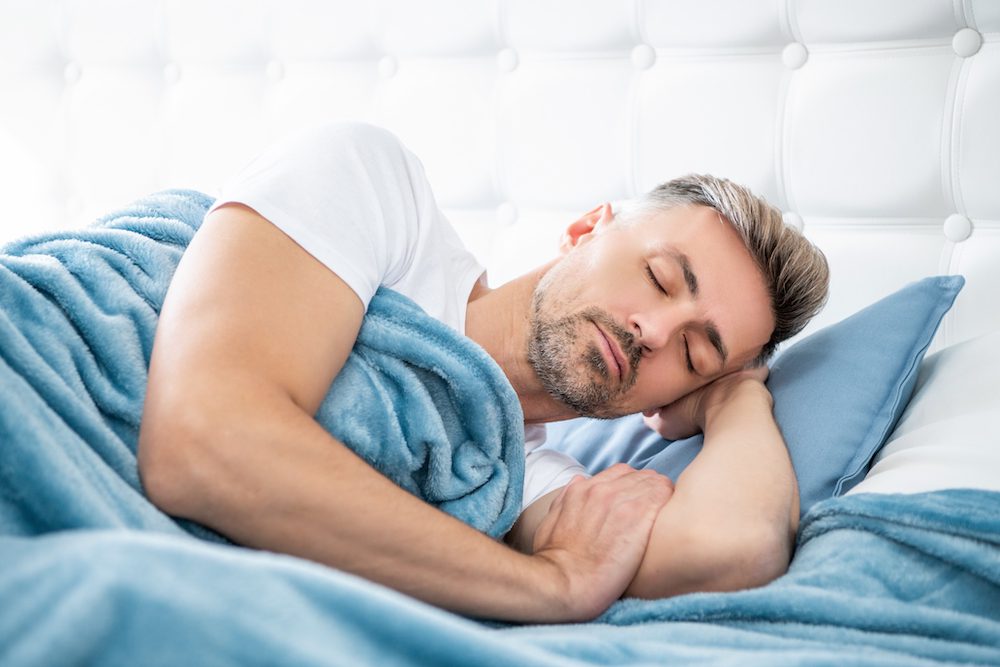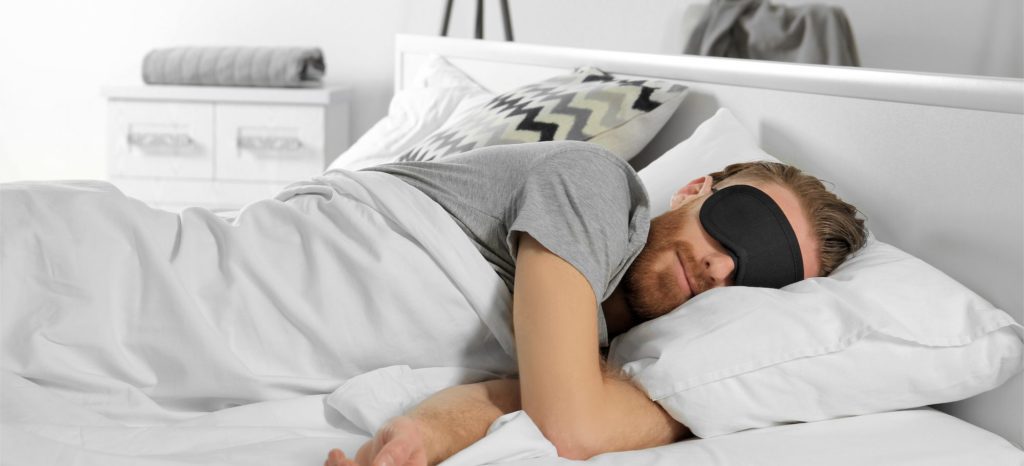Hallucinations are experiences in which you perceive something that seems real but is actually created by the brain. During a hallucination, you may see, hear, taste, touch, or smell something that is not actually present.
A hypnagogic hallucination occurs when falling asleep. Around 25% to 37% of people have a hypnagogic hallucination at some point in their life.
Having hypnagogic hallucinations can be confusing or scary, but they are generally not harmful. However, experts often recommend trying to find a potential cause for hallucinations.
Learning more about these hallucinations, including how they are different from nightmares, as well as their causes, symptoms, and treatment, can help you better understand and address hypnagogic hallucinations.
What Are Hypnagogic Hallucinations?
Hypnagogic hallucinations occur as you are falling asleep. They are classified as sleep-related hallucinations, which are a type of parasomnia. Parasomnias are a group of sleep disorders characterized by unwanted movements, feelings, perceptions, or dreams that occur during sleep or while transitioning into or out of sleep.
Hypnagogic Hallucinations vs. Hypnopompic Hallucinations
Hypnagogic and hypnopompic hallucinations are types of sleep-related hallucinations, but they take place at different times. Hypnagogic hallucinations occur while falling asleep, while hypnopompic hallucinations happen when waking up. Hypnagogic hallucinations are the more common of the two types.
Symptoms of Hypnagogic Hallucinations
The primary symptom of hypnagogic hallucinations is experiencing something that is not real while falling asleep. Hypnagogic hallucinations can involve one or more senses, including seeing, hearing, or feeling something that does not actually exist.
Most hypnagogic hallucinations involve a visual component. Visual hallucinations often appear as a combination of shapes, lights, and patterns that resemble a kaleidoscope. More complex imagery may involve people, animals, and lifelike scenes.
Between 25% and 44% of hypnagogic hallucinations include a feeling of something occurring within or around the body. These hallucinations may involve feeling weightless, flying, falling, or sensing another person or presence in the bedroom.
Sounds, also called auditory hallucinations, are estimated to occur in 8% to 34% of hypnagogic hallucinations. Sounds may include animal noises, words, voices or conversations, or other ambient sounds.
Hypnagogic hallucinations are involuntary and can involve many types and degrees of emotion. Though hallucinations themselves do not cause harm, they may cause significant fear. Some people have been injured from jumping out of bed during a hallucination, although this is uncommon.
Classifying Hallucinations
Understanding the type of hallucination a person is experiencing can help doctors narrow down the potential cause. Part of this process is distinguishing between hallucinations and illusions.
- Hallucinations: A hallucination involves experiencing something that isn’t real.
- Illusions: An illusion involves something that is real but is perceived in a way that is modified or distorted. An example of an illusion is seeing something that has a different shape, color, or size than it has in reality.
Hallucinations are also categorized by their content as either simple or complex.
- Simple Hallucinations: Simple hallucinations describe seeing only imagery that is not fully formed, such as lights, colors, or simple shapes.
- Complex Hallucinations: Complex hallucinations involve more fully formed images, such as animals, people, or even realistic scenes.
What Causes Hypnagogic Hallucinations?
There are many potential causes of hypnagogic hallucinations, including sleep deprivation, insomnia, some sleep disorders, medications, substance use, and a multitude of psychological and physical health conditions. Hallucinations can also happen in otherwise healthy people with no underlying conditions.
It is believed that hypnagogic hallucinations may be caused by the vivid dreams of REM sleep briefly arising as a person drifts off to sleep. REM sleep is a stage of sleep in which the brain is most active and the majority of dreaming occurs.
Hypnagogic hallucinations are a common symptom of narcolepsy. Narcolepsy is an uncommon disorder that affects a person’s ability to regulate sleep and wakefulness. People with narcolepsy may have extreme and persistent tiredness during the day, sudden muscle weakness, vivid dreams, and both hypnagogic and hypnopompic hallucinations.
Mental health conditions that may involve hallucinations include anxiety, depression with psychosis, and schizophrenia. Other medical conditions associated with hallucinations include:
- Sensory problems including eye diseases, vision loss, and hearing loss
- Seizures
- Migraine headaches
- Parkinson’s disease
- Dementia
- Fever
- Cancer affecting the brain
- Liver or kidney failure
- HIV/AIDS
- Guillain-Barré syndrome
Hypnagogic hallucinations can also be caused by the use of certain substances, including both prescription medications and illicit drugs. Hallucinations have been linked to the use of medicines that interfere with sleep patterns, such as certain antidepressants. Potential drugs of abuse that may cause hallucinations include:
- Alcohol
- Marijuana
- Lysergic acid diethylamide (LSD)
- Cocaine
- Heroin
- Phencyclidine (PCP)
- Amphetamines
- Ketamine
Are Hypnagogic Hallucinations Normal?
Hypnagogic hallucinations can occur in healthy people without an underlying medical condition. In fact, more than a quarter of all people will experience hypnagogic hallucinations, and infrequent hallucinations are considered normal in both children and adults.
For example, as many as 60% of people experience hallucinations after losing a spouse. Experts suggest that briefly hearing or seeing a lost loved one is a natural part of grief and bereavement.
Culture also plays a role in how hallucinations are understood. While some cultures view hallucinations as inherently negative, others view hallucinations as a spiritual experience or as a normal part of human perception.
Hypnagogic Hallucinations and Mental Health
Occasional hallucinations are common, even in healthy adults, and having hallucinations does not mean that a person has a mental health condition.
To determine whether hallucinations are caused by a mental health condition, doctors may conduct a psychiatric evaluation to understand a person’s symptoms. This evaluation includes reviewing a person’s medical history and conducting a mental status exam that evaluates:
- Behavior
- Appearance
- Mood
- Beliefs and perceptions
- Attention
- Memory
A doctor will also consider any other symptoms to determine the cause of hallucinations. For example, hallucinations that occur along with tiredness and episodes of sudden muscle weakness may suggest narcolepsy, while hallucinations that occur with depression may be related to a mental health condition.
Additional aspects of a person’s hallucinations can help a doctor determine whether hallucinations are related to a mental health condition.
- Awareness of Hallucinations: People with mental health conditions may not realize that hallucinations aren’t real. While people without mental health conditions may have trouble distinguishing hallucinations from dreams, they are often aware that hallucinations differ from reality.
- Auditory Hallucinations: Hearing things that aren’t real is twice as common in people with mental health conditions compared to those with other health conditions. Hypnagogic hallucinations from other causes can involve several senses but are usually visual.
- Content of Hallucinations: Hallucinations caused by mental health conditions are usually more antagonistic and hostile compared to hallucinations that have other causes.
Do Hypnagogic Hallucinations Differ From Nightmares?
Hypnagogic hallucinations only occur while a person is awake but about to fall asleep. Nightmares, which are distressing dreams that disrupt sleep, only happen while a person is actually sleeping. Because a person may wake up from a hypnagogic hallucination believing that they had a nightmare, it can be challenging to tell these two experiences apart.
While dreams and hallucinations share many similarities, there are some general differences between these experiences.
- Point of View: Hallucinations are typically perceived as taking place separately from the body or being observed by the sleeper, while in dreams the sleeper is an active participant.
- Sense of Self: Dreams rarely affect a person’s waking life, change a person’s beliefs, or alter their idea of who they are. In contrast, hallucinations may be seen as a reflection of reality and integrated into a person’s sense of self.
- Recall: People usually remember hallucinations well, while dreams are often forgotten after waking up.
How To Stop Having Hypnagogic Hallucinations
Whether it’s possible to stop hypnagogic hallucinations depends on what may be causing them. If hallucinations are due to sleep loss, a doctor may start by suggesting ways of getting enough rest. In some cases, only education and reassurance is needed since hypnagogic hallucinations can resolve on their own over time.
If a doctor determines that hypnagogic hallucinations are being caused by an underlying health condition such as narcolepsy, they may offer medical treatment that can reduce the frequency of hallucinations. For example, medications and behavioral changes used to treat narcolepsy can typically reduce hypnagogic hallucinations.
Other treatments for hypnagogic hallucinations may include medications, relaxation techniques, and reducing the use of substances or medications that contribute to episodes. Talk therapy may also be helpful in reducing hallucinations and helping people learn to deal with the fear and other challenges of recurrent episodes.
When to See a Doctor
It’s important to talk to a doctor if you begin to experience hallucinations while falling asleep or at any other time. Even if hallucinations are not causing harm, the doctor can help make sure that they are not linked to another health issue.
If a person experiencing hallucinations becomes delusional or detached from the world around them, then you should seek immediate medical attention.
Frequently Asked Questions About Hypnagogic Hallucinations
Doctors diagnose hypnagogic hallucinations based on a person’s medical history and symptoms. In many people, the likely cause of hallucinations is evident because of a person’s health history. A doctor may also prescribe one or more tests to determine the cause of hallucinations, such as:
– Tests to evaluate the brain and nervous system
– Mental health evaluations
– Tests for alcohol and substance use
– Eye tests
– A sleep study
You should feel safe telling your doctor about any kind of hallucinations that you have experienced.
Many people who have had hallucinations are worried about the reaction from loved ones and medical professionals if they discuss their hallucinations. Unfortunately, stigma related to hallucinations causes some people to delay reporting their condition and getting the support they need.
A doctor can help assess the cause of hallucinations, and, if necessary, recommend treatment. Hallucinations often get better with treatment, so talking to a doctor is an important first step in obtaining proper medical care.
References
Ask the Sleep Doctor
Have questions about sleep? Submit them here! We use your questions to help us decide topics for future articles, videos, and newsletters. We try to answer as many questions as possible. You can also send us an email. Please note, we cannot provide specific medical advice, and always recommend you contact your doctor for any medical matters.








